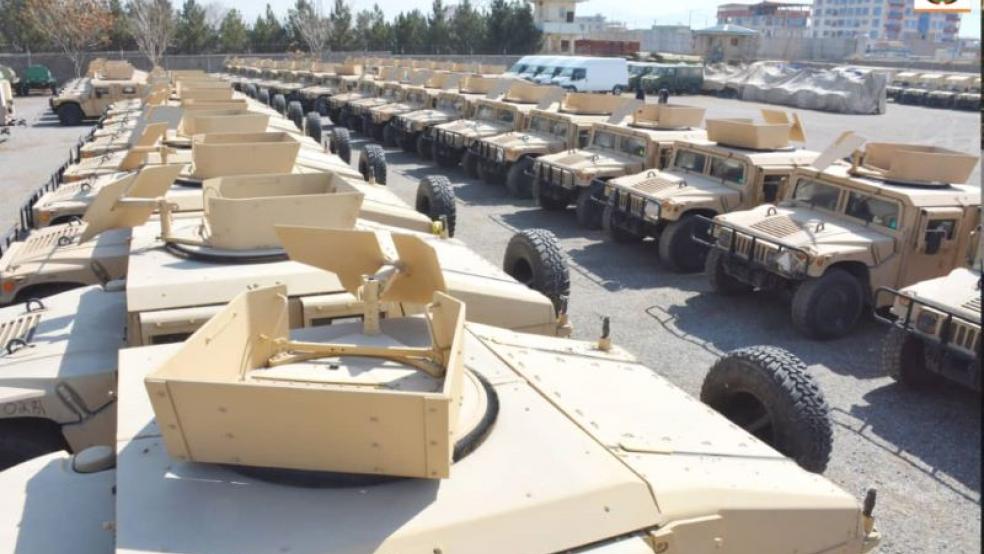The Taliban has seized billions of dollars’ worth of U.S.-supplied military equipment in Afghanistan following their rapid defeat of government forces in that country.
Images of Taliban fighters posing with U.S.-made supplies are circulating widely in the media, The Hill’s Rebecca Kheel reports, and include weapons ranging from M-16 rifles to armored Humvees. UH-60 Black Hawk helicopters and A-29 Super Tucano attack aircraft have also reportedly been captured.
Videos show Taliban fighters inspecting vehicles left behind by the Afghan military and opening crates of new firearms and other military equipment, including drones and night-vision goggles. “Everything that hasn't been destroyed is the Taliban's now," a U.S. official told Reuters.
A substantial stockpile: The U.S. has provided the Afghanistan government with an enormous supply of military equipment as part of the $83 billion it spent during the nearly 20-year course of the war to train and supply the national security forces. According to a report from the Government Accountability Office reviewed by Kheel, the U.S. supplied Afghan forces with more than 75,000 vehicles between 2003 and 2016, along with nearly 600,000 weapons, 160,000 pieces of communications equipment and more than 200 aircraft.
Some of the equipment has been lost or destroyed, but U.S. officials told Reuters that the Taliban now controls more than 2,000 armored vehicles and as many as 40 aircraft. (Afghan military pilots reportedly used about 50 aircraft to flee the country, effectively removing them from Taliban control.)
Military experts note, however, that technologically advanced equipment such as helicopters and attack aircraft would be hard to use without advanced training and skilled maintenance. “Ironically, the fact that our equipment breaks down so often is a life-saver here," an official said.
Pricey trophies: Given that some of the more advanced equipment will be hard if not impossible to use, the seizures may end up serving something other than a military purpose. “When an armed group gets their hands on American-made weaponry, it's sort of a status symbol. It's a psychological win,” Elias Yousif, deputy director of the Center for International Policy’s Security Assistance Monitor, told Kheel.
Still, there are concerns that the equipment could find its way to more advanced operators, potentially including ISIS, Russian or China.
Yousif said that the loss of the equipment should raise serious questions about U.S. strategy. “Clearly, this is an indictment of the U.S. security cooperation enterprise broadly,” he said. “It really should raise a lot of concerns about what is the wider enterprise that is going on every single day, whether that's in the Middle East, Sub-Saharan Africa, East Asia.”
White House mulls options: One military official told Reuters that the Pentagon has not ruled out airstrikes to destroy larger pieces of equipment, such as aircraft, though no decisions have been made.
Whatever happens next, the White House made it clear that it was aware of the situation. “We don't have a complete picture, obviously, of where every article of defense materials has gone, but certainly a fair amount of it has fallen into the hands of the Taliban,” White House national security adviser Jake Sullivan said earlier this week. “And obviously, we don't have a sense that they are going to readily hand it over to us at the airport.”




